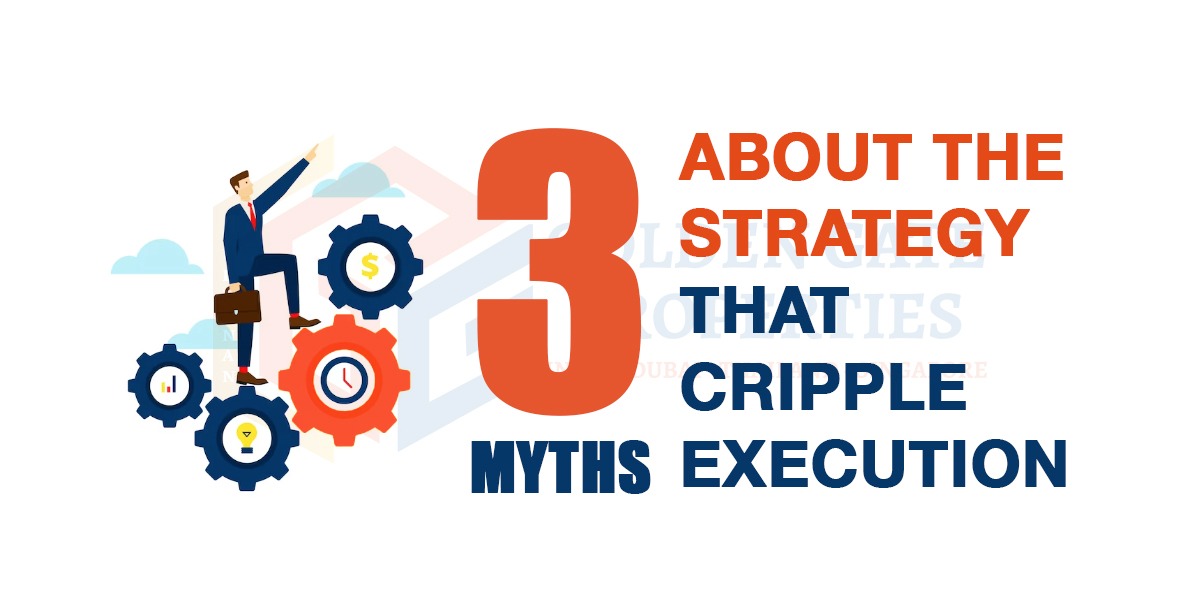
3 Myths About Strategy That Cripple Execution
“By launching the strategy, you mean you’re going to send out the PowerPoint slides, right?”
“It was a solid plan, but we struggled to get traction.”
“Could you please send me the PowerPoint with the strategy from January?” “I need to update my HR system goals.”
If you’ve ever used any of these things, you understand the difficulty that comes with strategy.
An issue that every firm with more than 500 or 1000 employees has faced.
Simply put, it’s the struggle of executing the strategic plan.
Most organisations’ strategies are stored in PowerPoint or Excel, and virtually all of them have been abandoned within six months. Nobody participates in the approach other than to report on their success once a year.
That is true for every organisation I’ve worked for, and most likely every plan I’ve worked on as a leader.
Even if the corporation does not forsake it, it generalises it to the point where it is no longer relevant. They eventually conclude, “We focused on customers, process, financials, and people.” Those are the four characteristics of any commercial enterprise. They’re basically defining the Balanced Scorecard framework as a plan.
The Balanced Scorecard method is not a strategy.
A balanced scorecard is a diagnostic tool that can assist you in developing your plan.
If you approach the tool as your strategy, it will not do anything distinctive for your business.
As someone who has been engaged in hundreds of strategies and seen tens of thousands of plans on our platform, I’d like to share some strategy myths that hamper implementation.
1. Strategy is conceptual, separate from daily operations.
There is a gap between what individuals say and what they actually do with their time on a daily basis. They discuss the strategic plan’s aims and ambitions, but their everyday activities do not necessarily add to the strategy.
There is a significant disconnect between operations and strategy.
It’s prevalent in certain firms to the extent that they’ve built entire strategy divisions that live outside of their business operations. Functions have their own set of objectives, processes, and concepts. The bigger the number of ideas they generate, the more successful they perceive themselves to be. It’s as if it’s their job to come up with brilliant ideas.
Nothing could be further from the truth.
Strategy is not something distinct, parallel, or existing on top of everything else. Being like that makes no sense. A strategy must be the basis for everything you do within the organisation.
Every day, you practise strategy.
Not even one hour every week.
Every day, every hour.
You can’t execute a strategy if you just spend one hour on it and then go about your business the rest of the day.
2. Suits own strategy
Executives, consultants, and strategy leaders.
They are in charge of strategy.
Lower-level staff should be unconcerned about it.
It seems sensible, but here’s the catch. When your employees regard themselves as subject to the centralised strategy process, they opt out. They consider it as a different entity from their employment. “Let me know when you need me,” they say. Meanwhile, I’ll simply keep working.” As if the strategy were something that intrudes on and disrupts their job.
However, 70% of what a company does is proper.
However, by tying it to the strategy, you can motivate the remaining 70%. You assist others in prioritising and focusing on the 70%. You promote a greater degree of involvement in not only what they’re doing, but also in the company’s overarching goals.
By integrating your employees into the strategy development process, you give them a stake in it. And when people own something, they tend to take care of it.
3. Strategy is planning
No.
Strategy is not the same as planning.
The strategy includes planning. Strategy is about putting plans into action. And the execution is business as usual. The strategy should not be something you do on the side.
When COVID strikes, a strategy must take a back seat. When something unexpected happens, you can’t stop strategizing. On the opposite. That is precisely when a strategy is required. If you spend one hour per week on strategy, it means you spend 97.5% of your time not executing well.
In reality, 95% of major firms are in this situation. Why?
Because many of these businesses don’t need to be strategically successful to stay in business.
Do you really need to execute a successful plan if you’re Bank of America or HSBC to achieve your sales figures or raise them by 5 or 10%? You don’t, in fact. Because you’re in a position where the competition isn’t as fierce, or because people need your product so badly that they’re prepared to spend enormous sums of money without questioning fees and levies.
But only for as long as it isn’t true.
You are utterly extinct as soon as PayPal, a new bank, or cryptocurrency appear. And you have no way out for two reasons.
First, you lack creative items since you have never innovated on your plan or executed it successfully. Second, you lack a culture of adaptation and strategy implementation. So turning that massive steamer around is nearly impossible.
These businesses put themselves in danger.
Consider the automobile sector and the development of Tesla. It’s an excellent example.
There is no way Tesla could have disrupted that business so efficiently and become the world’s most valuable automobile maker. Especially considering how few Teslas are on the road. (Do you know anybody who owns a Tesla? I don’t.)
However, they are the world’s most valuable automobile corporation.
Why? Because they efficiently carry out a plan that isn’t simply about vehicles. It isn’t simply about marketing, climate change, manufacturing, diversification, or using the same batteries in automobiles that are used in solar systems and residences. It’s all about establishing a new category and bringing everything together.
That is how effective plan execution seems.
And that is what it has the potential to do to giant organisations that do not have it in their DNA and never have.
Create new possibilities, cultivate flexible cultures, and address existential dangers.
In a nutshell, you must answer the strategic challenge.



